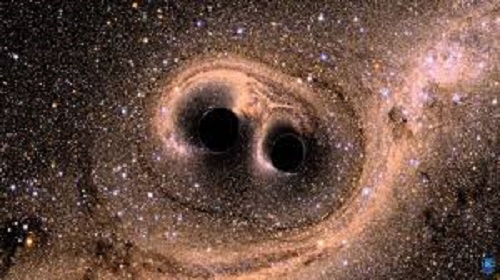Einstein’s General Relativity unveils the intricacies of gravity, attributing it to the curvature of spacetime caused by mass. In contrast to magnetism’s dual nature of attraction and repulsion, this groundbreaking theory introduces the concept of gravity wells, playing a pivotal role in comprehending the forces behind gravitational pull. Explore the fascinating world of gravitational physics and Einstein’s revolutionary insights.
Discovering the Force of Gravity: Unveiling Einstein's Insight
Have you ever wondered why gravity pulls us down and not up? Gravity, the force responsible for the attraction between objects with mass or energy, dictates the familiar fall of apples and the orbits of planets around stars.
In the world of magnets, attraction and repulsion occur, but gravity seems to exhibit a one-way pull. Albert Einstein unraveled this mystery in 1915 with his groundbreaking theory of general relativity. According to Einstein, gravity’s downward pull is rooted in the curvature of spacetime caused by objects with mass, such as our Earth. This theory explains why you feel the pull toward the ground, as mass literally bends the fabric of the universe.
Unlocking the Concept of Spacetime:
Before diving into the complexities of gravity, it’s essential to grasp the concept of spacetime.
Spacetime is precisely what it sounds like – a fusion of the three dimensions of space (length, width, and height) with the fourth dimension, time. Through brilliant mathematical insights, Einstein pioneered the understanding that the laws of physics operate within a universe where space and time are intricately intertwined.
In practical terms, this connection means that space and time influence each other – as you traverse space at high speeds, time behaves differently for you compared to someone moving more slowly. This phenomenon explains why astronauts, hurtling through space, experience a slightly slower aging process than individuals on Earth.

Demystifying Gravity Wells: Understanding the Forces of Attraction
In the intricate world of gravity, it’s crucial to grasp the concept that objects in the universe are drawn to each other due to the bending and curving of spacetime. Albert Einstein’s revolutionary theory of general relativity unveiled that mass and energy in the universe can curve spacetime, giving rise to the gravitational forces we experience.
Visualizing the four dimensions of spacetime can be challenging, as our brains are accustomed to thinking in three dimensions. To simplify, envision the surface of a trampoline. When unoccupied, it’s flat. However, when you stand on it, the trampoline stretches around your feet, creating a valley – a two-dimensional representation of a gravity well. Objects, like a ball, placed on the trampoline would roll towards the center of the valley, akin to how gravity pulls objects towards massive entities in the universe, such as Earth.
This gravity well concept extends to larger celestial bodies. Just as the trampoline’s well becomes steeper with more weight, more massive objects like the Sun or black holes exert a stronger gravitational pull than Earth.
The key distinction lies in the nature of gravity – it forms wells, not hills. While scientists theorize about exotic matter or energy that could create gravity hills, the current understanding is that matter consistently generates gravity wells.
So why does gravity pull you down and not push you away?
Imagine someone went under the trampoline and pushed up. The ball would roll away! This would be a gravity hill, not a gravity well. As far as scientists know, matter – or stuff – always makes gravity wells and not gravity hills. Scientists can imagine things made of exotic matter or energy that would cause gravity to push you off into space, but so far, no one has found anything that could cause gravity to push you away from Earth





